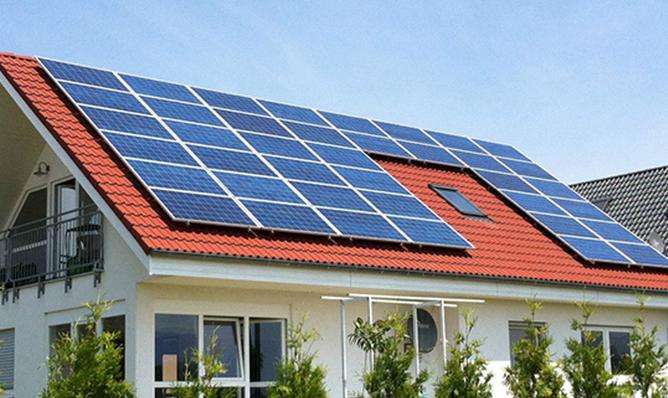What materials are solar panels made of? Solar panels are made of semiconductors; they are made of inertial materials: 1. A car traveling on a level road suddenly brakes and the lower body of the person in the car stops moving. the car, and the upper body must maintain its original state and continue to move forward due to inertia, so the person will lean forward 2. For power supply, a number of individual cells must be connected in series, in parallel and hermetically sealed; Components. Solar panels (also called solar cell modules) are the core part of the solar power generation system and the most important part of the solar power generation system. 3. Sunlight shines on the p-n junction of the semiconductor to form new hole-electron pairs, which are under the action of the electric field, holes flow from region n to region p and electrons flow from region p to region n. Once the circuit is turned on, a current is formed. This is how photovoltaic solar cells work. @2019
What are solar panels made of (details), as well as the principle and approximate manufacturing process
To put it simply, it uses solar cells, connected in series or parallel soldered together to meet a specific voltage and current.
Since solar cells are made of silicon wafers, they are extremely easy to break. It is therefore necessary to package the welded solar cells. Improves its resistance to external forces.
There are three packaging methods commonly used in the industry:
Epoxy resin encapsulation (suitable for low powers)
PET laminated packaging (suitable at low powers) )
Fe packagingused tempered glass
2. Silicon solar cell production process
Usual crystalline silicon solar cells are manufactured on high-quality silicon wafers with a thickness of 350 to 450 μm, which are sawn from ingots of Become stretched or cast silicon.
The above method actually consumes more silicon. In order to save materials, chemical vapor deposition methods are currently used to prepare polysilicon thin-film batteries, including low-pressure chemical vapor deposition (LPCVD) and chemical vapor deposition processes. plasma-enhanced (PECVD). Additionally, liquid phase epitaxy (LPPE) and sputter deposition methods can also be used to prepare polycrystalline silicon thin film batteries.
Chemical vapor deposition mainly uses SiH2Cl2, SiHCl3, SiCl4or SiH4 as reaction gas. It reacts under a certain protective atmosphere to generate silicon atoms and deposits them on a heated substrate. , SiO2, Si3N4, etc. However, studies have shown that it is difficult to form larger grains on substrates other than silicon, and it is easy to form gaps between grains. The way to solve this problem is to first use LPCVD to deposit a thin layer of amorphous silicon on the substrate, then anneal this amorphous silicon layer to get larger grains, and then deposit it on top of this seed layer of silicon. therefore, recrystallization technology is undoubtedly a very important link. The currently used technologies mainly include solid phase crystallization method and midzone melt recrystallization method. In addition to the recrystallization process, thin-film sili cellspolycrystalline silicon also use almost all the methods used to prepare monocrystalline silicon solar cells. With energy battery technology, the conversion efficiency of the solar cells produced in this way is significantly improved.
The solar panel voltage in the calculator is 2 volts and 4 volts [measured at noon]














